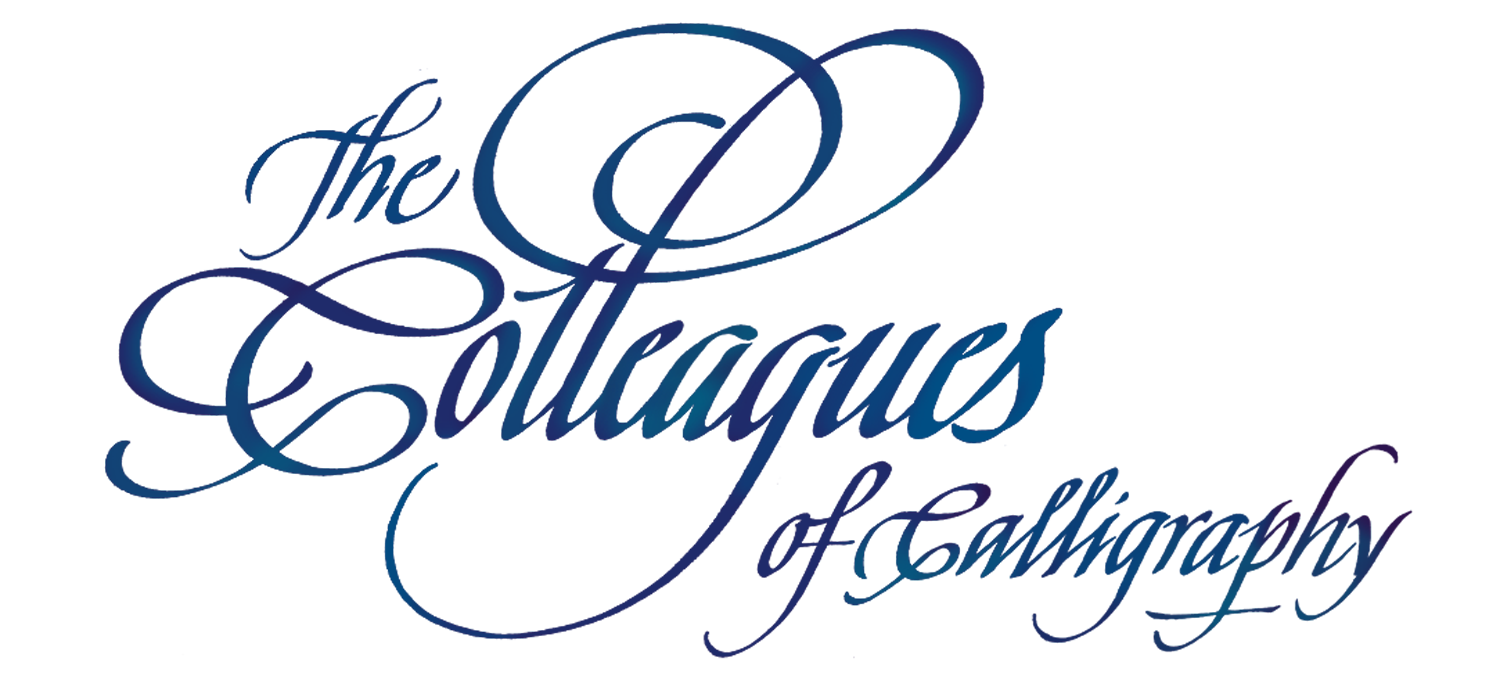Enhance your learning & practice by checking out the resources in our library!
The Colleagues has an extensive library inventory. Many items are newly published, some are rare and out of print. All are well researched acquisitions purchased by the Colleagues with the hope of serving our members well.
When we meet in person a selection of books are made available for a one-month check-out. Find basic rules for borrowing here. You can request items for a future meeting by using the online catalog.
If you are in possession of a book from our library, please bring it to our next in-person meeting or contact us to arrange its return.
If you have recently borrowed any books from the library, consider sharing a review.
We continue to explore shipping books and volunteers have offered to be part of a CoC Bookmobile to arrange drop-offs and pick-ups of books while some of our meetings are virtual.
For any questions about the library please contact: librarian@colleaguesofcalligraphy.com.
This Month’s Featured Titles:
To coincide with our Pointed Tool Playground theme, we recommend the following:
PP-1. A Copperplate Manual: An Introduction to Writing with the Pointed Pen (1979)
by Gerald Krimm
An expedient approach to learning copperplate with all of the necessary exemplars and
PP-2. Ron Tate, Copperplate with Ron Tate (DVD) (2009)
by Ron Tate
Learn the art of Copperplate lettering with professional calligrapher, Ron Tate.
This DVD walks you through the history, tools, and techniques of this script from the 1700s England. The course includes 21 chapters covering essentials such as table angles, correct posture, writing angles, letter sizes, lower-case and capital forms, numbers, connecting letters, use of the pointed pen and oblique pen holders, ink samples, and old handwriting styles from old penmanship books.
An extra feature shows how to develop your own style of penmanship (~2 hours).
PP-3. Michael R. Sull, Spencerian Script and Ornamental Penmanship: Early American Handwriting (Volume Two) (1989)
Features the penmanship of Platt R. Spencer, originator of Spencerian penmanship, a popular system of cursive handwriting. He was a teacher and active in the business school movement.
Over 1000 reproductions of ornamental alphabets, practical as well as novelty styles, and off-hand flourishing. This is more of an historic collection than an instruction book.




